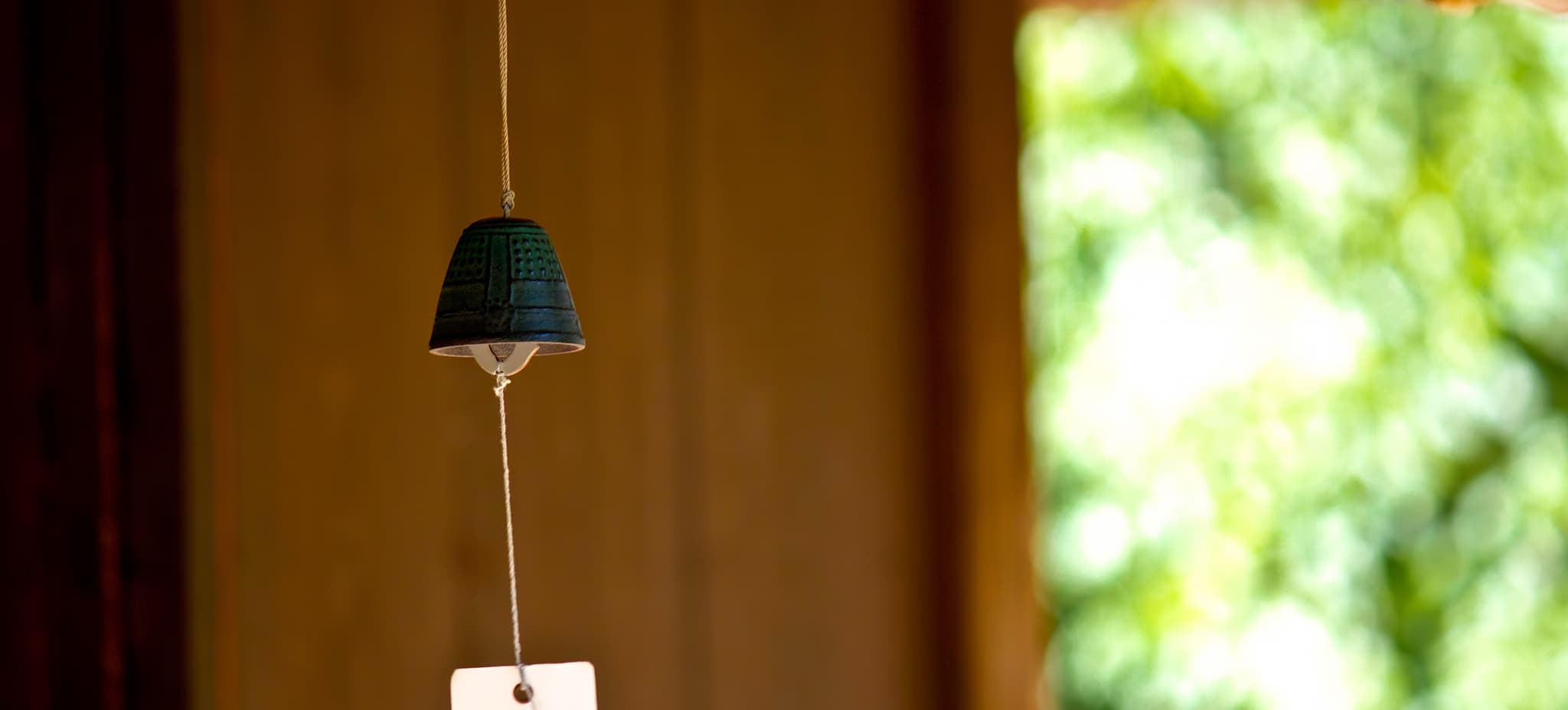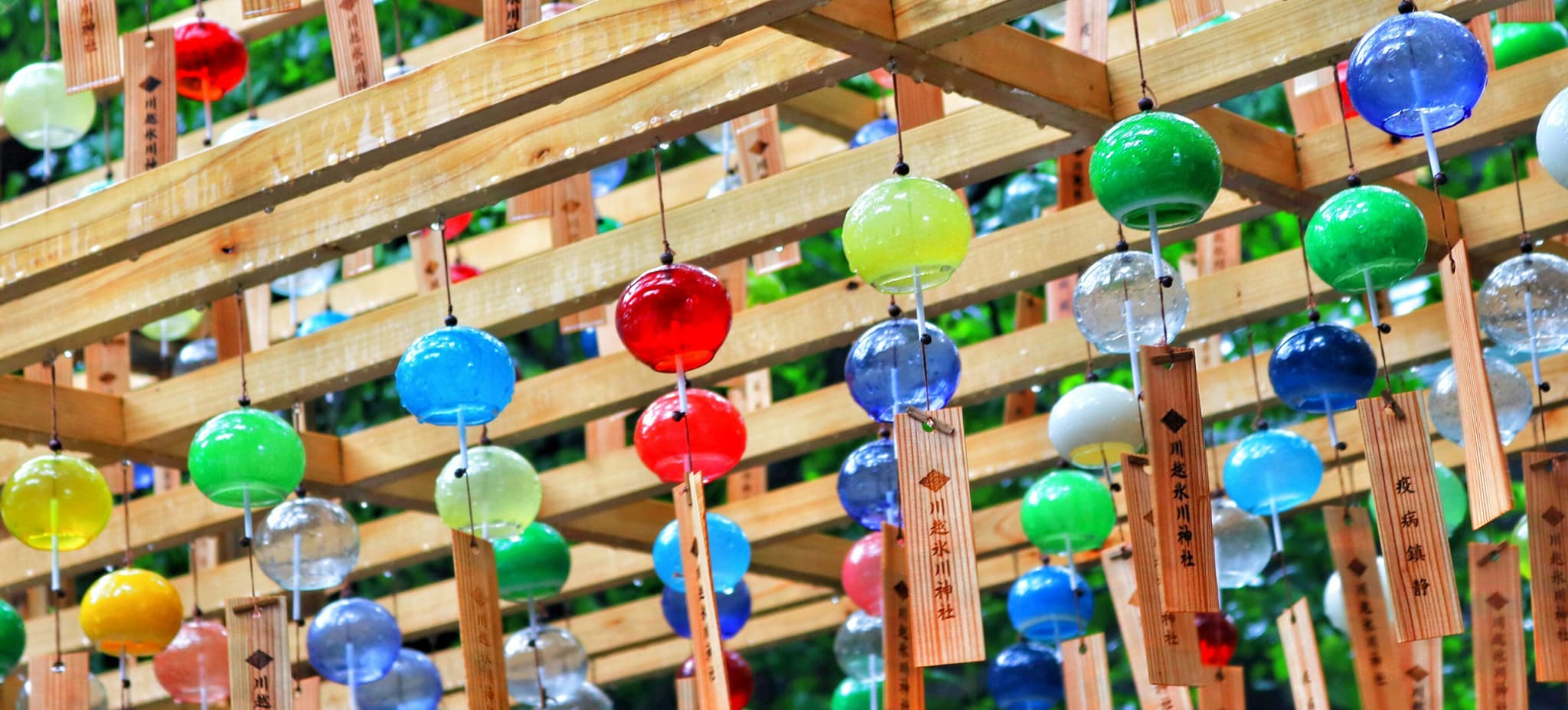Kinnotake Blog #Summer #Tradition #Culture
Kinnotake Blog
7/01/2025
Fūrin: The Sound of Summer in Japan
Chimes in the Wind: Discovering Japan’s Summer Wind Bells
As the summer heat blankets Japan, there's one gentle sound that brings a moment of coolness and calm: the soft, tinkling chime of a fūrin, or Japanese wind bell. More than just decoration, fūrin are a poetic symbol of summer in Japan—seen hanging from windows, porches, temples, and gardens, swaying softly in the breeze.
What Is a Fūrin?
A fūrin (風鈴) is a small wind chime, typically made of glass, iron, or ceramic, that produces a light, soothing sound when moved by the wind. A small clapper inside hits the sides, and a strip of paper, called a tanzaku, hangs from the bottom to catch the wind.
Each material produces its own unique tone:



The sound of a fūrin is designed not just to please the ear, but also to make you feel cooler—a psychological trick that’s been used in Japan for centuries.
Ceramic or clay fūrin: soft and earthy in both sound and texture.
A Brief History of Fūrin
The origin of fūrin can be traced back to China, where bronze bells were used to ward off evil spirits. These bells were introduced to Japan around the Heian period (794–1185) and evolved over time.
By the Edo period (1603–1868), glass-making techniques from the West were adopted in Japan, and the glass fūrin became popular among city dwellers, especially in Edo (modern-day Tokyo). The chimes were often hung at the entrances of homes during summer to ward off misfortune and bring a sense of seasonal beauty.

Today, fūrin are cherished both as cultural items and as handcrafted souvenirs —each with its own sound, design, and personalit

 Kinnotake Resorts
Kinnotake Resorts





